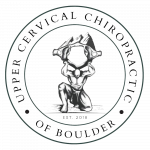What is Abnormal Spine Curve?
Abnormal spine curve is an umbrella term for any condition that affects the natural curvature of the spinal column. Conditions like lordosis, kyphosis, and scoliosis are all considered to be abnormal spine curve conditions.
Abnormal spinal curvature can be triggered by both genetic and environmental factors. However, one of the most common culprits of abnormal spinal curvature is a vertebral misalignment in the upper cervical spine.
Signs and Symptoms of Abnormal Spine Curve
As the name suggests, abnormal spine curvature is characterized by a change to the natural c-shaped or s-shaped curves of the spinal column. The condition is often accompanied by decreased range of motion in the back or neck, neck and back pain, poor posture, muscle tension, fatigue, respiratory issues, and muscle weakness.
How the Upper Cervical Spine Affects Abnormal Spine Curve
The upper cervical spine serves as the primary support structure for the head and neck, while also providing a stabilizing framework for the rest of the spinal column. Whether it’s caused by poor posture or injury, a vertebral misalignment in this region of the spine can place undue stress and strain on the muscles, ligaments, and nerves in the neck and back. As the vertebrae in the upper cervical spine continue to shift out of place, the ensuing pressure can cause the spine to curve inward or outward in an effort to compensate for the misalignment. Left untreated, this process may eventually lead to the development of abnormal spine curve.
How Our Treatment Works
At our clinic, Upper Cervical Chiropractic of Boulder, we utilize a progressive form of chiropractic treatment known as the Blair Upper Cervical technique. This specific technique is designed to gently realign the upper cervical spine, which in turn can help reduce or eliminate abnormal spinal curvature. The Blair technique is unique in that it is a low-force, highly precise method of treatment that does not require the use of any harsh popping or cracking motions.
When treating abnormal spine curve, Dr. Christina Coblish and Dr. Ryan Moeskau, our two Blair Upper Cervical specialists, will first conduct a range of diagnostic testing to pinpoint the exact location of any upper cervical misalignments. This process typically involves the use of cutting-edge 3D imaging technologies, including cone-beam computed tomography (CBCT) scans. Unlike a black and white X-ray, CBCT scans are dynamic images; with a point and a click, Dr. Coblish and Dr. Moeskau can inspect the upper cervical vertebrae from different angles and directions.
If a misalignment is detected, a gentle, specific adjustment will be administered in order to realign the affected vertebrae and restore the spine’s natural curvature. The goal of this treatment is to reduce the amount of stress and strain placed on the muscles, ligaments, and nerves in the neck and back. In turn, this can help to improve range of motion, reduce pain, and improve overall function.
Although you may experience significant improvements after your initial treatment, it’s important that you continue to visit for follow-up treatments; this will allow for Dr. Coblish and Dr. Moeskau to track your progress and ensure the adjustment is setting correctly.
If you suffer from an abnormal spinal curve and traditional treatment options aren’t working for you, Dr. Coblish and Dr. Moeskau can help. We service patients across Colorado, including Boulder, Longmont, Louisville, Erie, Lafayette, Broomfield, and Denver.


